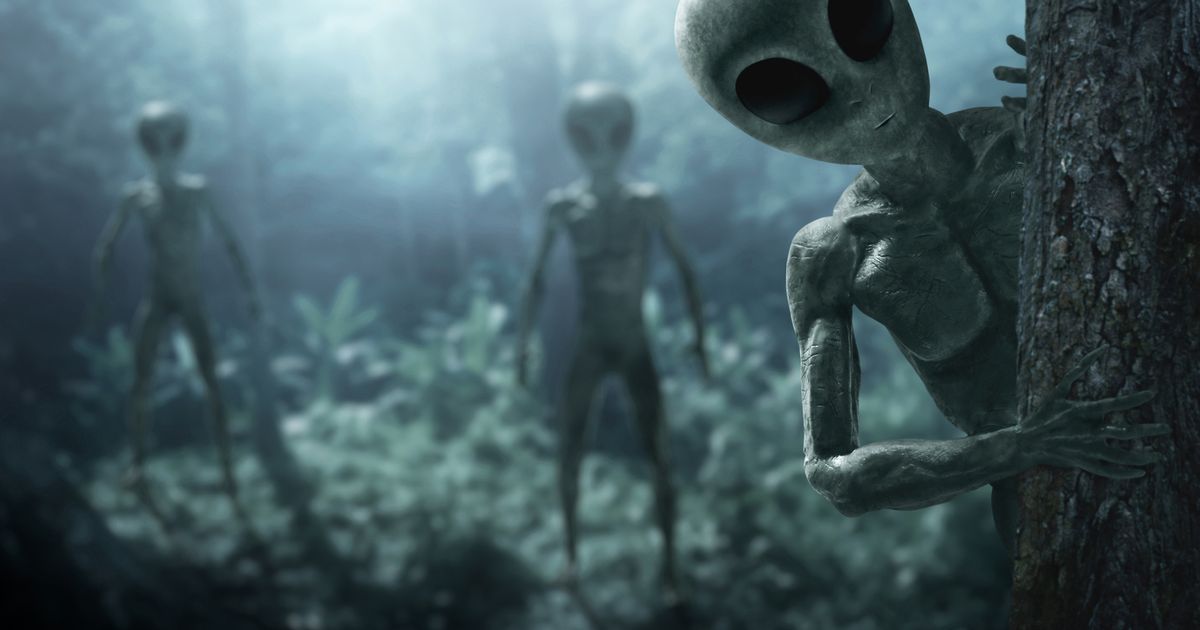VICE
Scientists at Brookhaven National Laboratory have uncovered an entirely new kind of quantum entanglement, a phenomenon that causes particles to become weirdly linked, even across vast cosmic distances, reports a new study. The discovery allowed them to capture an unprecedented glimpse of the bizarre world inside atoms, the tiny building blocks of matter.
The mind-bending research resolves a longstanding mystery about the nuclei of atoms, which contain particles called protons and neutrons, and could help shed light on topics ranging from quantum computing to astrophysics.
The exciting discoveries took place at the Relativistic Heavy Ion Collider (RHIC), a specialized facility at Brookhaven in New York that can accelerate charged atoms, known as ions, to almost light speed. When these ions collide—or even just pass near each other—their interactions expose the inner workings of atoms, which are governed by the trippy laws of quantum mechanics.
All kinds of weird stuff occurs in this tiny realm, but quantum entanglement in particular is so strange that Albert Einstein called it “spooky action at a distance.” This phenomenon occurs when particles become intertwined with each other, causing their properties (such as spin or momentum) to sync up, even if they are billions of light years apart. Quantum entanglement has been demonstrated countless times in laboratories, but the entangled particles have always belonged to the same group and possessed the same charge, such as photons, which have no charge, or electrons, which are negatively charged.
Now, for the first time ever, scientists at Brookhaven have captured interference patterns that are created by the entanglement of two particles with different charges, a breakthrough that has opened up a completely new window into the mysterious innards of atoms that make up visible matter in the universe, according to a study published on Wednesday in Science Advances.
“There’s never been any measurement in the past of interference between distinguishable particles,” said Daniel Brandenburg, a physics professor at the Ohio State University who co-authored the new study, in a call with Motherboard. “That’s the discovery; the application is that we get to use it to do some nuclear physics.”
“I wasn’t even, in a sense, trying to find something so fundamental about quantum mechanics,” he continued. “When we realized that there’s something really interesting going on here, that was a really big surprise to me.”
Brandenburg and his colleagues achieved this milestone with the help of a sensitive detector called the Solenoidal Tracker at RHIC, or STAR, that captured interactions between gold ions that were boosted to the brink of light speed. Clouds of photons, which are particles that carry light, surround the ions and interact with another type of particle, called gluons, that hold atomic nuclei together.
These encounters between the photons and the gluons set off a chain of events that ultimately created two new particles, called pions, which have opposite charges—one positive and one negative. When these pions careened into the STAR detector, the precision instrument measured some of their key properties, such as velocity and angle of impact, which were then used to probe the size, shape, and arrangement of gluons inside the atomic nuclei with a precision that has never been achieved before.
“It’s like a microscope in the sense that you use a photon to look at something,” Brandenburg explained. “In this case, we’re using really, really high-energy photons, where their wavelength is short enough that we can actually look at the inside of an atom.”
Scientists have imaged atomic nuclei at lower energies before, but attempts to probe these structures at high energies has always produced a puzzling result. Nuclei in these experiments look way bigger than they should, according to models, an outcome that has puzzled scientists for decades.
Now, the STAR collaboration has now solved this mystery by pinpointing a blurring effect that is linked to the photons in the experiment. Essentially, past studies captured one-dimensional glimpses of nuclei that did not account for important patterns in photons, such as their polarization direction. The new study included this polarization information, allowing Brandenburg and his colleagues to probe the nuclei from two angles, parallel and perpendicular to the photon’s motion, producing a two-dimensional view that matches theoretical predictions.
What’s more, the team is even able to make out the rough positions of key particles in the nucleus, such as protons and neutrons, as well as the distribution of gluons. It also offers a new way to unravel persistent mysteries about the behavior of atoms at high energies.
“As you peer deeper inside the nucleus, to the parts of the nucleus that have less and less energy, they’re very important for how the nucleus holds together, but we actually don’t know a lot about that part of the nucleus,” Brandenburg said. “So as you go to higher and higher energies, you really don’t know what it looks like.”
“That’s why more measurements with higher precision will be poised to really make a statement about this energy dependence and what the heart of the nucleus is doing at these different scales,” he added.
To that point, Brandenburg hopes to repeat this technique, and versions of it, at RHIC and other facilities like the Large Hadron Collider, in order to tease out the long-hidden details inside atomic nuclei.
Gazing into atoms at high energies could help scientists resolve some of the most intractable problems in science, including the grand mystery of how the quantum world can coexist with our reality, which is governed by the much more familiar rules of classical physics. It also has practical applications, especially for quantum computing, a technology that aims to revolutionize computations using the strange rules of the quantum world.
“By looking at different nuclei and by looking at this process at higher precision, we can start to learn more and more details,” Brandenburg concluded. “What we did here is a proof of concept, but there’s a lot more opportunity.”


